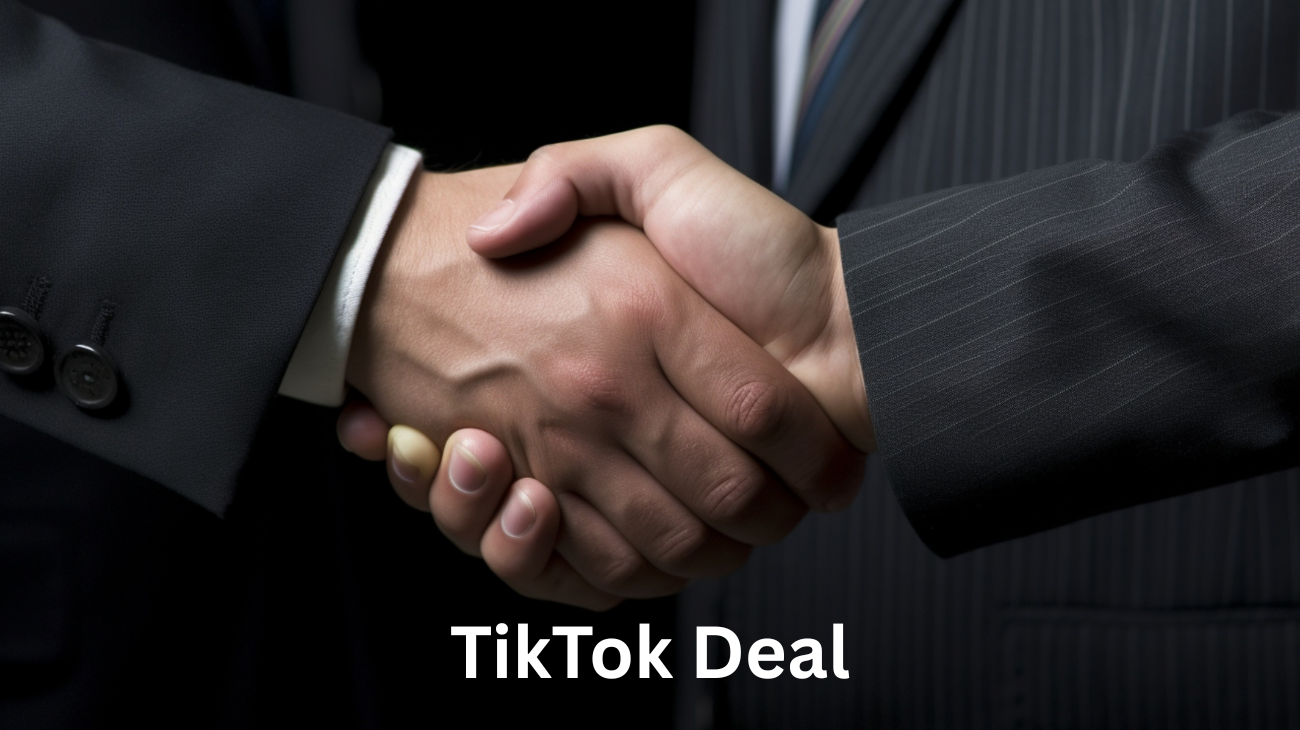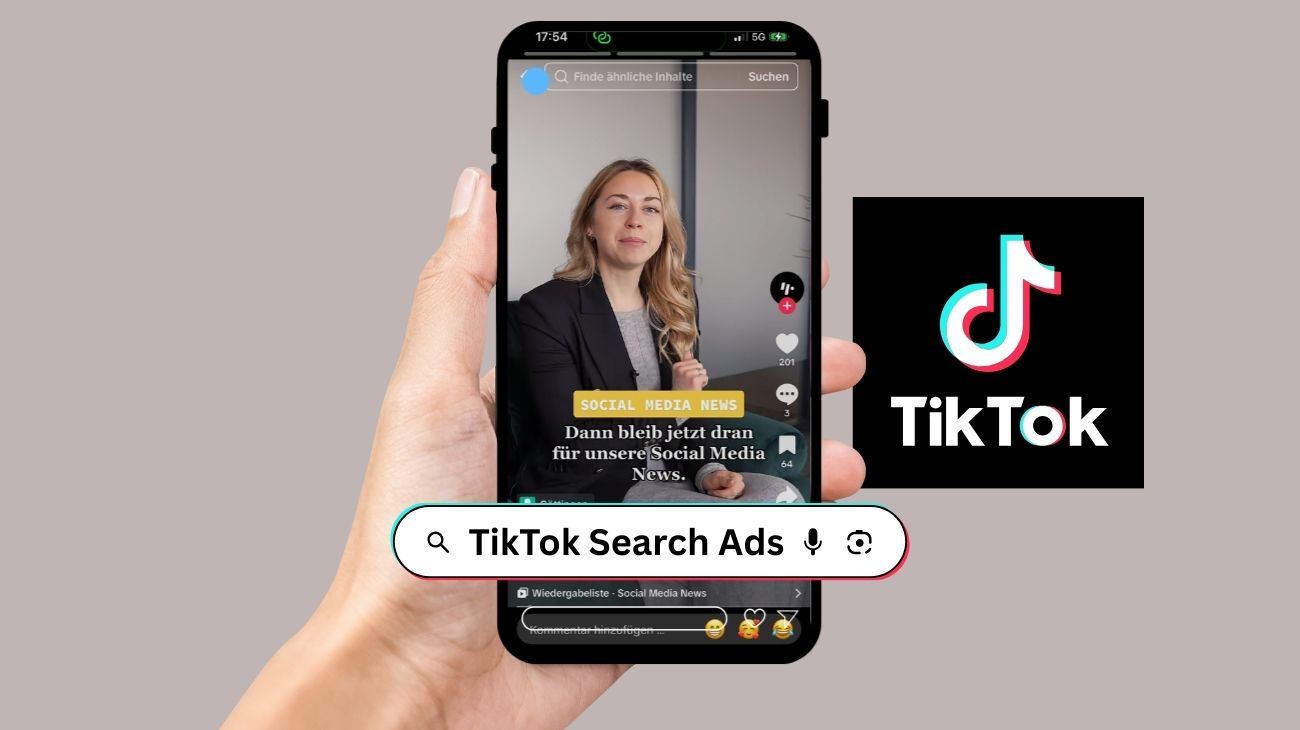TikTok deal 2025: 50% of US revenue goes to ByteDance

What does this mean for companies and brands?
For months, TikTok’s future in the US hung in the balance. After intense debates about data security, government influence and possible access by Chinese authorities, it seemed only a matter of time before the social media platform would be forced out of the American market. It was only with the change of government and the new leadership under Donald Trump that the negotiations began to move forward. Instead of a ban, a far-reaching compromise is now on the table, one that could permanently change the future of the platform and the global social media landscape.
The planned TikTok deal 2025
In future, 50% of all TikTok revenue in the United States will go to its Chinese parent company, ByteDance. What at first glance appears to be a pragmatic solution is in reality a balancing act between politics, economics and technology, with potential consequences that extend far beyond the digital sphere.
For brands, agencies and advertisers, the crucial question now is: how stable will TikTok remain as a marketing platform when power, data and control are redistributed between East and West?
But how did this deal come about in the first place?
The origin of this measure lies in years of regulatory tensions between the US government and TikTok. Critics warn that US user data could end up in the hands of Chinese authorities. There is also a desire to bring the recommendation algorithm and control over the platform closer to American institutions. A law passed in 2024 under Joe Biden’s presidency put TikTok under considerable pressure. Either the US business would be sold off or the app could be banned in the US. The response to this was a spin-off concept, whereby a new company would take over TikTok’s business in the US, with US and international investors holding a majority stake, while ByteDance would continue to secure a stake.
Who gets what, who retains control?
The plan envisages US and international investors acquiring around 80% of the shares in the new company. ByteDance is to retain 20%. This means that ByteDance will formally remain a significant shareholder, even though it will no longer have sole control. The deal is essentially structured in such a way that ByteDance will continue to play a significant role in the company’s economic success despite the reduction in its shareholding.
50% of all US revenue for ByteDance
Now, 50% of the US revenue generated by the new TikTok entity is to flow to ByteDance. This distribution is probably not arbitrary, but serves as compensation for the currently low valuation of the US share (often quoted at around USD 14 billion), while analysts had previously estimated its value at up to USD 40 billion.
ByteDance is expected to derive revenue from two sources:
- Licence fees for the algorithm
- Profit shares from his participation
In total, this results in an effective share of approximately 50% or more in the US business.
Who retains control over the algorithm and the data?
TikTok’s algorithm is considered the heart of the platform. It determines what content is shown to users and thus has a strong influence on reach, engagement and revenue. In the current plans, the algorithm will remain in the hands of ByteDance. The new US entity would have to license it and retrain it with US user data. US user data is to be stored locally on US servers. However, it is still unclear how much insight US operators will have into the inner workings of the algorithm.
Approval required from China
So far, no final approval has been given by the Chinese government or ByteDance itself in its final form. The Chinese side has stated that US investors must offer an ‘open, fair and non-discriminatory environment’. A deal of this complexity is heavily dependent on political, regulatory and technical negotiations.
What implications does this have for brands and marketing agencies?
For companies that use TikTok as a marketing channel, this deal has far-reaching consequences. Some are potentially positive, others more critical.
Opportunities
- Greater legal stability in the US
If TikTok US is transferred to a new, US-oriented structure, the risk of a total ban or abrupt exclusion as an advertising channel will decrease. - Potential for better advertising products
A more regulated framework could go hand in hand with greater transparency, better reporting and a clearer interface for advertisers. - More attractive financing and investment
International investments and capital inflows could promote innovation in web technologies, which will bring corresponding benefits to brands.
Risks and challenges
- Reduced margins & rising costs
With 50% of revenue going to ByteDance, the new company has less room for manoeuvre. This could lead to higher advertising prices or limited discounts. - Dependence on the algorithm
Brands remain highly dependent on decisions made by ByteDance. Changes to the recommendation algorithm can have a major impact, and brands have little influence over this. - Limited data access
If the US entity does not have full access to all data, this could limit targeting, attribution and optimization. - Political risk remains
Even with a deal in place, legal and regulatory intervention cannot be ruled out. Restrictions by legislators or courts could still be possible. - Competition from other platforms
If TikTok becomes less flexible or more expensive, brands could switch to alternatives such as Instagram Reels, YouTube Shorts or new competitors.
How might the deal develop?
For strategic thinking, it is helpful to run through possible future scenarios:
Scenario A: The deal goes through smoothly
In this scenario, a complete agreement is reached. TikTok USA operates as an independent company, US investors are in charge, the platform continues to run, and brands benefit from relative stability and a predictable structure.
Scenario B: Strict requirements & regulatory pressure
US regulators are formulating strict transparency and control requirements. Audits, disclosure of algorithmic mechanisms and interventions could stifle innovation, but at the same time build trust.
Scenario C: The deal fails or is watered down
If China does not agree or ByteDance does not divest parts of the business, the deal could be abandoned or significantly modified. TikTok remains uncertain, making calculations more difficult for brands.
Recommendations for brands Scenario D: Platform shifts & market fragmentation and agencies
In light of uncertainties, brands could spread their budgets more widely. Competitor platforms could aggressively catch up and gain market share.
Recommendations for brands and agencies
A new balance is emerging between politics, technology and economics, and those who position themselves correctly now can even reap the benefits. As a brand or agency, you are part of this change. If you understand how power, data and algorithms are changing, you can tailor your campaigns to be effective in this new social media era. To prepare for the changes ahead, it’s worth taking strategic action now. Here are some concrete steps to help you stay agile and advertise successfully in the long term:
- Diversify your platform strategy
Don’t rely solely on TikTok. Strengthen your presence on Instagram, YouTube, Snap and other channels to remain flexible and reach a wider audience. - Build a solid tracking and reporting system
Invest in your own benchmarks, attribution tools and data analysis. This will allow you to identify changes in reach, costs or user behaviour at an early stage. - Plan modular budgets and campaigns
Design your campaigns so that you can quickly adapt them when algorithms or cost structures change. - Demand more transparency in contracts
Pay attention to reporting obligations and comparative values in order to objectively measure the performance of your campaigns. - Strengthen your first-party data
The more independent you are from platform data, the more robust your marketing strategy will remain in the face of external changes. - Keep an eye on costs and benefits
Regularly analyse CPC, CPM, reach and ROAS to make fact-based decisions. - Stay informed about legislation and regulation
Political developments are increasingly influencing how social media is operated. If you know about changes early on, you can react more quickly.
Conclusion
The planned TikTok deal is more than just an economic agreement. It will result in a new digital power distribution between China and the US. For brands and agencies, this means remaining vigilant, flexible and ready to innovate. If you start now to consciously adapt your marketing strategy to these new structures, you will gain room for manoeuvre. Because those who not only observe changes but also use them strategically will continue to be visible in the future where attention is generated.










 Sign up
Sign up 